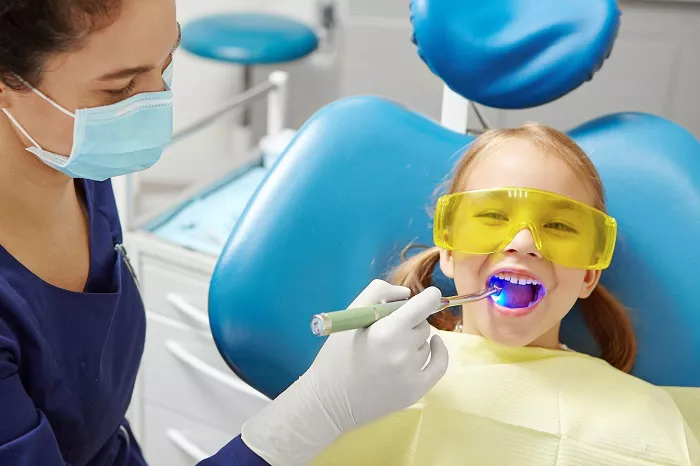Pediatric dentistry plays a crucial role in safeguarding the oral health of children from infancy through adolescence. It is a specialized field that requires unique skills, knowledge, and a gentle approach to address the specific dental needs of the younger population. Understanding the scope and various aspects of pediatric dentistry is essential for parents, dental professionals, and those interested in the field.
The Scope of Pediatric Dentistry
Preventive Care
Oral Hygiene Education: Pediatric dentists are at the forefront of teaching children and their parents about proper oral hygiene practices. This includes demonstrating the correct way to brush teeth, usually with a soft-bristled toothbrush and a pea-sized amount of fluoride toothpaste for children under 3 years old, and a slightly larger amount for older children. They also emphasize the importance of flossing, although it can be more challenging for younger kids. For example, they may use colorful diagrams or models to show children how plaque builds up on teeth and the consequences of not cleaning properly.
Fluoride Treatments: Regular fluoride applications are a key preventive measure. These can be in the form of topical gels or varnishes applied in the dental office. Fluoride helps to strengthen the enamel, making teeth more resistant to decay.
Pediatric dentists determine the frequency of fluoride treatments based on the child’s risk of cavities, which may be influenced by factors such as diet, oral hygiene habits, and the presence of fluoride in the local water supply.
Dental Sealants: Sealants are thin, protective coatings applied to the chewing surfaces of the back teeth (molars and premolars). These teeth have deep grooves and pits where food particles and bacteria can easily get trapped. Sealants act as a physical barrier, preventing decay. Pediatric dentists typically recommend sealants for children as soon as their permanent molars erupt, usually around ages 6 and 12.
Diagnosis and Treatment of Dental Caries
Early Detection: Pediatric dentists are trained to detect cavities in their early stages. They use a combination of visual inspection, dental probes, and sometimes X-rays (although with caution in children due to radiation concerns). For example, they look for white spots on the teeth, which can be an early sign of demineralization and potential cavity formation.
Treatment Options: When cavities are found, the treatment depends on the severity. For small cavities, a simple filling may be sufficient. However, in more advanced cases, a pulpotomy (partial removal of the pulp) or pulpectomy (complete removal of the pulp) may be necessary, especially if the decay has reached the nerve of the tooth. In some instances, if a primary tooth is severely decayed and cannot be saved, an extraction may be performed, followed by appropriate space maintenance to ensure proper eruption of the permanent tooth.
Management of Dental Trauma
Immediate Response: Children are more prone to dental injuries due to their active lifestyles. Pediatric dentists are equipped to handle emergency cases such as a knocked-out tooth. If a permanent tooth is avulsed, they know the importance of quickly reimplanting it (ideally within 30 minutes) and providing the proper post-treatment care, which may include splinting the tooth and prescribing antibiotics.
Long-Term Follow-Up: Even after the initial treatment of a dental trauma, children require long-term monitoring. There may be complications such as discoloration of the tooth, root resorption, or the need for further restorative work as the child grows and the affected tooth develops. Pediatric dentists schedule regular follow-up appointments to assess the healing process and address any emerging issues promptly.
Orthodontic Evaluation and Interventions
Early Assessment: Starting around age 7, pediatric dentists begin to evaluate a child’s bite and the development of their jaws and teeth. They look for signs of malocclusion, such as crowding, overbite, or underbite. Early detection allows for the possibility of interceptive orthodontics, which can sometimes prevent more severe orthodontic problems later.
Treatment Coordination: If orthodontic treatment is needed, pediatric dentists may work in conjunction with orthodontists. They may provide preliminary orthodontic appliances like space maintainers to hold space for permanent teeth or palatal expanders to widen a narrow palate. They also ensure that the child’s overall oral health is maintained during the orthodontic treatment period, which can last several years.
The Importance of Pediatric Dentistry in Child Development
Oral Health and Overall Well-being
A healthy mouth is essential for a child’s overall health. Poor oral health can lead to pain, difficulty eating, and even affect a child’s speech development. For example, untreated dental caries can cause severe toothaches, making it hard for a child to chew food properly, which may result in inadequate nutrition. Moreover, if a child has a speech impediment due to dental issues, it can impact their self-esteem and social interactions.
Establishing Good Oral Health Habits
The experiences a child has in the pediatric dental office can shape their attitude towards oral health for the rest of their lives. A friendly and positive dental visit can encourage children to be more cooperative with their oral hygiene routines at home. Pediatric dentists and their staff use child-friendly language, colorful decorations in the office, and rewards systems to make the dental visit a pleasant one. This helps in instilling the importance of regular brushing, flossing, and dental check-ups from an early age.
Conclusion
Pediatric dentistry is a diverse and essential field that encompasses a wide range of preventive, diagnostic, and treatment services. It is dedicated to ensuring the oral health and overall well-being of children. With the continuous advancements in technology and a shift towards more preventive and holistic care, the future of pediatric dentistry looks promising. Parents and caregivers should prioritize regular dental visits for children, starting from an early age, to take full advantage of the expertise and services offered by pediatric dentists. Dental professionals interested in this field should be prepared to invest in the necessary education and training to provide the best possible care for the youngest patients. The impact of pediatric dentistry extends far beyond just healthy teeth; it contributes to a child’s healthy growth, development, and quality of life.

